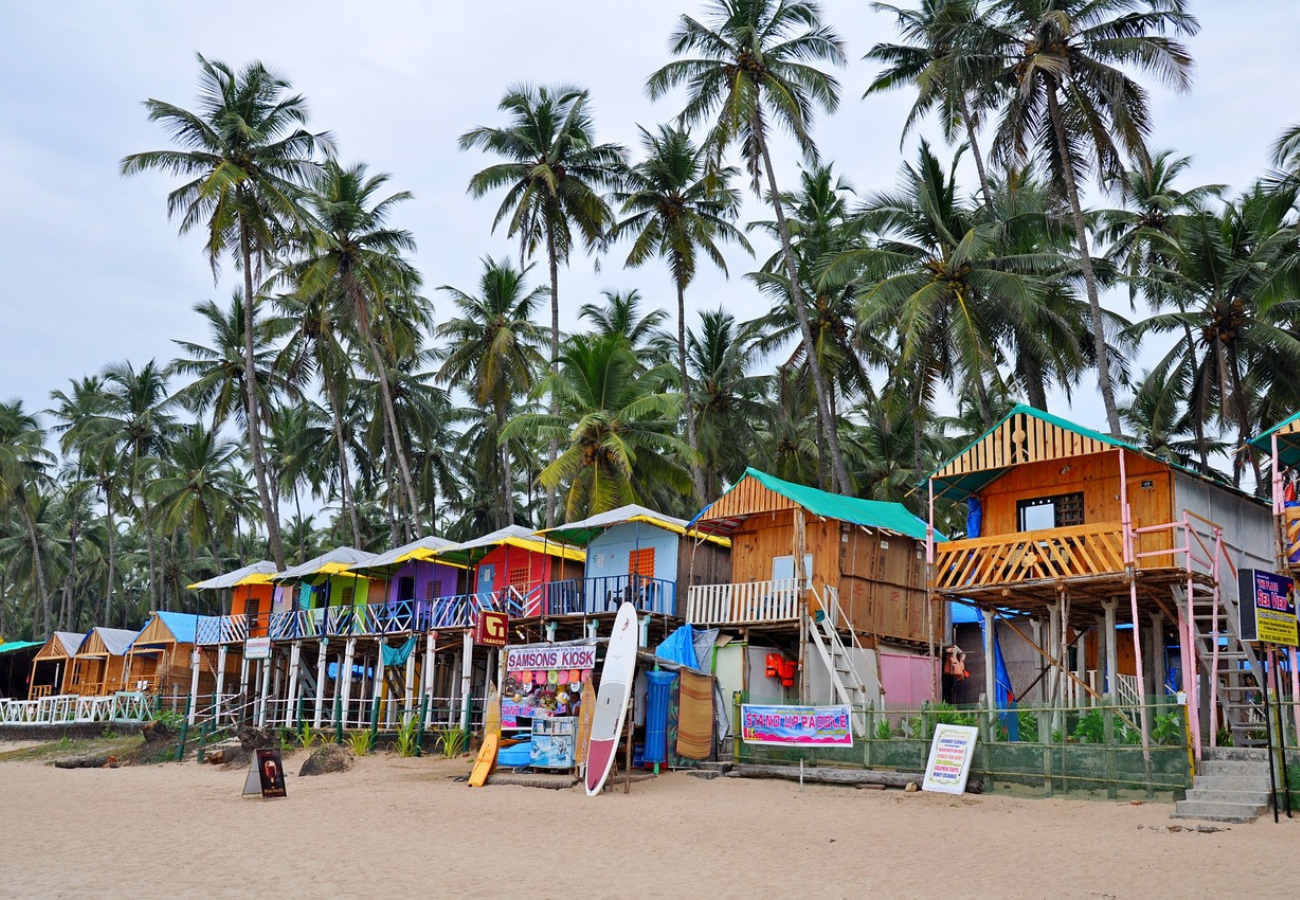
Top Villages to Explore in South Goa
Goa has been branded as the party capital of India for far too long. But Goa is not limited to just the vibrant nightlife filled with high-end pubs and clubs, bustling markets, upbeat shacks, and more. Beyond all these marketed attractions are a range of serene waterfalls, intricately carved temples, historic forts and churches, clean and quiet beaches, and lush green landscapes, waiting to be explored. City-based travellers looking for a different/more fulfilling/wholesome vacation experience that allows them to unwind and reconnect with nature and live the sussegado (laidback) life should consider visiting South Goa. It is dotted with quaint villages that make perfect holiday destinations for those looking to embrace the peaceful village life, surrounded by nature, culture, and history.
Betul
This small fishing village in South Goa is known for its serene beach where the river Sal meets the Arabian Sea, forming an estuary. This relatively uncrowded beach offers mesmerising, panoramic views of the coastal village and surrounding lush green landscapes. Betul also takes pride in its lighthouse, located on a hillock overlooking the shoreline, which is 15 meters tall and is one of the few lighthouses in Goa that is still functional. However, do check the timings for when it is open to the public.
This coastal village also houses a fort that was built in the 17th century during the reign of Chattrapati Shivaji Maharaj. Currently, in ruins, it still possesses a 4-meter area with a single cannon facing the meeting point of river Sal and the Arabian Sea, offering people a vantage point to appreciate and drink in the majestic views. The beach, lighthouse, and fort are all located within a few kilometers of each other, making it easy to plan a day’s itinerary of exploring this beautiful village.
Rivona
Rivona, hailing from the Sanguem Taluka, is a blend of nature and history. One of the main attractions of this village are the ancient Rivona Caves said to have dated back to the Buddhist times in the 6th or 7th century. A short tour of these caves will reveal fascinating rock carvings, known as petroglyphs. These ancient caves were used by Buddhist monks for meditation and imparting their knowledge.
Cool off in the spring nearby while soaking in the natural beauty surrounding you. Rivona is also home to the Vimaleshwar Temple, dedicated to Lord Shiva, dating back centuries. Visitors who enjoy exploring off-beat places or history buffs will find Rivona as an ideal place to learn about Goa’s past. You may like to include this village in your itinerary if you are traveling to Goa with your family.
Chandor
Chandor, formerly known as Chrandrapura, was recognised as the capital of Goa during the rule of the Bhojas and Kadambas. In fact, ancient inscriptions of certain Bhoja kings have been found that date as far back as the 3rd or 4th century CE. Steeped in rich history, Chandor is also home to several Goan houses as well. The Menezes Braganza Pereira house, one of the oldest Goan mansions, is massive and offers a peek into the grandeur of architecture and life lived during the colonial period.
Poinguinim
Poinguinim, located in Canacona Taluka, offers a mix of wildlife and coastal beauty. The village is less than 3 km away from the Cotigao Wildlife Sanctuary entrance. The reserve, a dense forest of 86 sq. km., is home to a myriad of wildlife such as mouse deer, flying lizard, slender loris, velvet-fronted nuthatch, flying squirrel, and much more. The sanctuary is equipped with 2 watchtowers for a better viewing experience. Poinguinim is also a short distance from Galgibaga Beach. This pristine beach is also known as a turtle nesting site. Olive Ridley sea turtles are said to be found during their nesting season, November to April.
There are several such charming villages in South Goa that beckon visitors who are looking for a more relaxing and historically as well as culturally rich vacation experience. These villages offer the perfect setting to unwind, relax, and enjoy the beauty of Goa away from the common tourist hotspots.




Leave a Reply